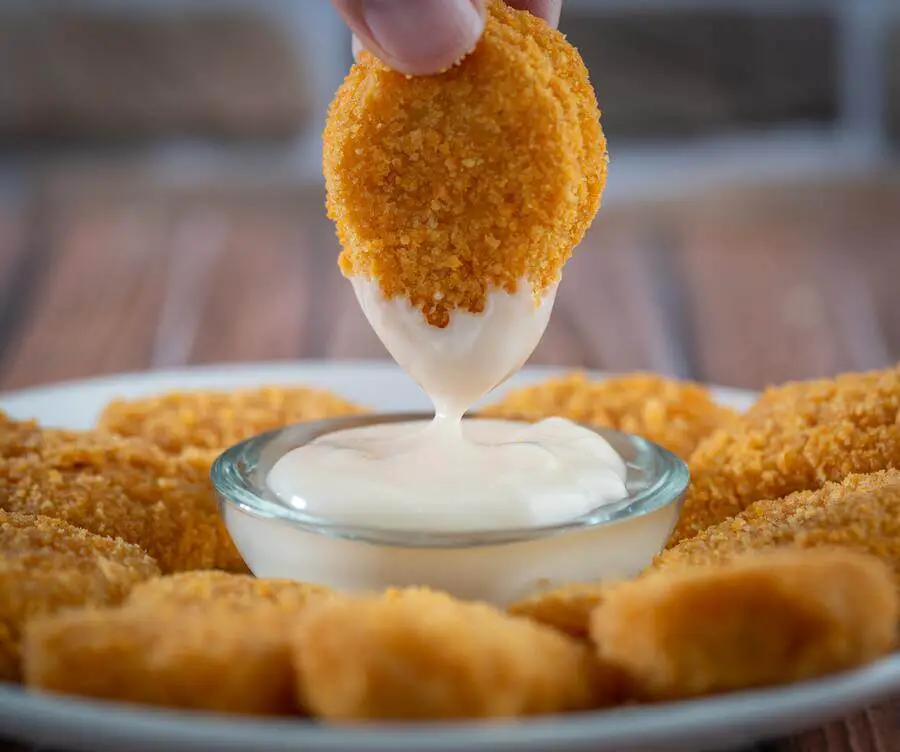McDonald’s Globalization Strategy
The Origins of McDonald’s International Expansion
Early Steps into Global Markets
McDonald’s first foray into international markets began in the 1960s, with the opening of restaurants in Canada and Puerto Rico. The company recognized the potential for growth beyond the United States and sought to capitalize on its already successful business model. This marked the beginning of McDonald’s quest to become a global fast-food giant.
Strategic Vision for Globalization
From the outset, McDonald’s approach to globalization was strategic. The company aimed to maintain its core brand identity while also adapting to local cultures and tastes. This strategy, often referred to as “glocalization,” has been key to McDonald’s international success.
Challenges in Cultural Adaptation
Understanding Diverse Culinary Traditions
As McDonald’s expanded into different countries, it encountered diverse culinary traditions. Each new market presented a unique set of food preferences, dietary habits, and cultural norms. Understanding and adapting to these culinary traditions has been a significant challenge for McDonald’s.

Navigating Varying Consumer Preferences
In addition to culinary traditions, consumer preferences also vary widely from country to country. What appeals to customers in one country may not resonate with those in another. Navigating these varying consumer preferences and developing menu items that cater to them has been another critical aspect of McDonald’s cultural adaptation strategy.
Regional Specialties and Unique Offerings
Asia-Pacific McDonald’s Innovations
Tailoring Menus to Asian Palates
In the Asia-Pacific region, McDonald’s has had to tailor its menu to cater to local palates. This has resulted in some unique offerings, such as the Teriyaki Mac Burger in Japan, the McRice in Indonesia, and the McAloo Tikki in India. These menu items incorporate local flavors and ingredients, making them appealing to local customers.
Local Ingredients and Unique Flavors
In addition to tailoring its menu, McDonald’s also sources locally in many of its markets. This not only supports local agriculture but also ensures that the food is fresh and meets local taste preferences. For example, in Japan, McDonald’s uses local chicken for its Chicken McNuggets, while in India, it sources a majority of its ingredients locally.
European McDonald’s Varieties
Embracing Local Cuisines
In Europe, McDonald’s has embraced local cuisines by offering menu items like the McBaguette in France and the McKroket in the Netherlands. These offerings reflect local culinary traditions and show McDonald’s commitment to cultural adaptation.
Cultural Sensitivity in Menu Development
Developing these localized menu items requires cultural sensitivity and a deep understanding of local food cultures. McDonald’s invests significantly in market research to understand local tastes and preferences, which informs its menu development process. This approach has allowed McDonald’s to create menu items that resonate with local customers while still maintaining its global brand identity.
Cultural Icons and Marketing Strategies
Collaborations with Local Celebrities
Leveraging Pop Culture for Branding
McDonald’s has often collaborated with local celebrities to promote its brand and products. These collaborations leverage pop culture to create a connection with local consumers. For example, in China, McDonald’s has partnered with popular singer Kris Wu, while in South Korea, it has collaborated with boy band BTS. These partnerships help McDonald’s engage with younger audiences and stay relevant in different markets.
Successes and Failures in Celebrity Partnerships
While most celebrity collaborations have been successful, there have been some failures. For example, McDonald’s partnership with Travis Scott in the United States resulted in supply shortages due to overwhelming demand. Despite such challenges, celebrity partnerships remain a key part of McDonald’s marketing strategy in many markets.
Cultural Festivals and Limited-Time Offerings
McDonald’s Participation in Local Celebrations
McDonald’s often participates in local cultural festivals by offering limited-time menu items. For example, during the Lunar New Year in China, McDonald’s offers special menus that include traditional foods like dumplings. Similarly, in Germany, McDonald’s offers the McRib during the Christmas season. These offerings allow McDonald’s to engage with local consumers and celebrate local traditions.
The Impact of Limited-Time Menu Items
Limited-time menu items not only celebrate local cultures but also create excitement and drive sales. They give customers a reason to visit McDonald’s and try something new. Despite the logistical challenges of introducing these items, they have proven to be successful in many markets.
Customization in Global Markets
The Rise of Create Your Taste
Introduction and Evolution of Customization
In 2014, McDonald’s introduced the “Create Your Taste” concept in Australia, allowing customers to customize their burgers using touch-screen kiosks. The concept was a success and was soon rolled out in other markets, including the United States, Canada, and Hong Kong. This marked a significant shift in McDonald’s approach to customization and customer engagement.
Customer Engagement and Personalization
The “Create Your Taste” concept allows customers to personalize their meals by choosing from a variety of ingredients. This level of personalization not only enhances the dining experience, but it also engages customers and makes them feel more connected to the brand. Despite the logistical challenges of offering such a wide range of customization options, McDonald’s has managed to implement this concept successfully in many of its markets.
Localized Customization Initiatives
Adapting Create Your Taste to Different Cultures
While the “Create Your Taste” concept is global, McDonald’s has adapted it to cater to local tastes. For example, in India, the customization options include local flavors and ingredients, while in Japan, customers can choose from a variety of unique sauces. This localized approach to customization demonstrates McDonald’s commitment to catering to local tastes and preferences.
Balancing Global Branding with Local Preferences
While customization allows McDonald’s to cater to local preferences, it also poses a challenge in maintaining a consistent global brand. McDonald’s has to balance the need for local adaptation with the need to maintain its brand identity. This requires careful menu planning and a deep understanding of each market.
Adaptations to Dietary Preferences
Vegetarian and Vegan Options
Responding to Growing Dietary Trends
As dietary trends evolve, McDonald’s has adapted its menu to offer vegetarian and vegan options. For example, in India, where a significant portion of the population is vegetarian, McDonald’s offers a range of vegetarian burgers and wraps. Similarly, in Sweden and Finland, McDonald’s has introduced the McVegan, a vegan burger made from soy protein.
Successes and Challenges in Plant-Based Offerings
While these plant-based offerings have been successful in meeting the needs of vegetarian and vegan customers, they also pose challenges. Developing plant-based menu items that taste good and meet McDonald’s quality standards is not easy. Additionally, there are logistical challenges in sourcing plant-based ingredients and ensuring they are not contaminated with animal products.
Localized Health-Conscious Menus
Cultural Perceptions of Healthy Eating
Perceptions of healthy eating vary from culture to culture. In some markets, healthy eating is associated with fresh, natural ingredients, while in others, it’s about low-fat or low-calorie options. Understanding these cultural perceptions is crucial for McDonald’s as it develops its health-conscious menus.
Strategies to Promote Balanced Lifestyles
In addition to offering healthier menu options, McDonald’s also promotes balanced lifestyles through its marketing campaigns. For example, in many markets, McDonald’s includes nutritional information on its packaging and encourages customers to balance their McDonald’s meals with regular exercise. This approach shows McDonald’s commitment to promoting health and wellness.

Challenges in Global Standardization
Maintaining Consistency Across Borders
Quality Control and Standardization Challenges
As a global brand, McDonald’s strives to maintain consistency across its restaurants. However, this is not always easy due to differences in local ingredients, culinary practices, and customer preferences. McDonald’s has to balance the need for standardization with the need for local adaptation, which often requires innovative solutions.
Cultural Backlash to Global Homogenization
While McDonald’s global brand is one of its strengths, it can also be a source of criticism. In some cultures, there is a backlash against global homogenization and a preference for local businesses. McDonald’s has to navigate these cultural dynamics carefully to maintain its brand appeal.
Adaptations to Religious and Cultural Practices
Navigating Religious Dietary Restrictions
In many markets, McDonald’s has had to adapt its menu to comply with religious dietary restrictions. For example, in Muslim-majority countries, McDonald’s offers halal-certified food, while in India, it does not serve beef or pork. These adaptations show McDonald’s respect for local cultures and religions.
McDonald’s Strategies in Culturally Sensitive Regions
In culturally sensitive regions, McDonald’s takes extra precautions to ensure its operations are respectful and appropriate. This includes careful menu planning, staff training, and community engagement. Despite the challenges, McDonald’s has managed to successfully operate in a wide range of cultural contexts.
Tech Integration in Different Markets
Digital Innovations in Ordering
Mobile Apps and Online Ordering Systems
In many markets, McDonald’s has introduced digital innovations to enhance the ordering process. These include mobile apps and online ordering systems, which allow customers to order and pay for their food from their smartphones. These digital innovations not only improve the customer experience, but they also provide McDonald’s with valuable data on customer behavior and preferences.
Technological Adaptations to Diverse Tech Landscapes
While digital ordering is now standard in many markets, McDonald’s has had to adapt its technology to diverse tech landscapes. For example, in countries with low smartphone penetration, McDonald’s uses SMS-based ordering, while in high-tech markets like Singapore, it offers self-service kiosks and table service.
Delivery Services in Global Markets
In addition to digital ordering, McDonald’s has also introduced delivery services in many markets. This includes partnerships with third-party delivery platforms like Uber Eats and DoorDash, as well as its own delivery service, McDelivery. Delivery services have become increasingly important in the age of digital convenience, and McDonald’s has embraced this trend to expand its customer base.
The Role of Technology in McDonald’s Global Expansion
Enhancing the Customer Experience
Technology plays a crucial role in McDonald’s global expansion strategy. From digital ordering and delivery services to personalized marketing and customer engagement, technology enhances the customer experience and enables McDonald’s to reach a wider audience.
Challenges and Opportunities in Tech Integration
While technology offers many opportunities, it also poses challenges. These include issues related to data privacy and security, as well as the need for continuous innovation to stay ahead of competitors. Despite these challenges, McDonald’s continues to invest in technology and digital innovation as part of its global growth strategy.
Economic Contributions and Local Sourcing
Supporting Local Economies
Employment Opportunities
As one of the world’s largest fast-food chains, McDonald’s contributes significantly to local economies. This includes providing employment opportunities in its restaurants and corporate offices, as well as through its supply chain.
Supporting Local Agriculture
In many markets, McDonald’s sources its ingredients locally. This not only ensures freshness and quality, but it also supports local agriculture and contributes to economic development. For example, in China, McDonald’s sources over 95% of its ingredients locally, supporting thousands of farmers and suppliers.
Balancing Global Supply Chain with Local Sourcing
Challenges in Sourcing Locally
While local sourcing has many benefits, it also poses challenges. These include issues related to quality control, supply chain management, and price volatility. Despite these challenges, McDonald’s is committed to sourcing locally where possible and working closely with its suppliers to ensure quality and consistency.
Achieving Global Standardization
Even with local sourcing, McDonald’s strives to achieve global standardization in its products. This requires careful coordination and collaboration with suppliers, as well as rigorous quality control processes. Despite the complexity of this task, McDonald’s has been successful in maintaining a consistent taste and quality across its global operations.
Corporate Social Responsibility and Public Reception
The Role of CSR in McDonald’s Global Strategy
Environmental Sustainability
Corporate social responsibility (CSR) is a key part of McDonald’s global strategy. This includes initiatives related to environmental sustainability, such as reducing waste, improving energy efficiency, and sourcing sustainably. For example, McDonald’s has set a target to recycle guest packaging in all its restaurants by 2025, and it is working towards sourcing all its fish from sustainable sources.
Community Engagement
In addition to environmental sustainability, McDonald’s also engages with local communities through philanthropy and volunteerism. This includes support for local charities, community events, and educational programs. These initiatives help McDonald’s build strong relationships with local communities and enhance its brand image.
Public Reception of McDonald’s Cultural Adaptation
Positive Reactions to Localized Menus
In many markets, consumers have reacted positively to McDonald’s localized menus. They appreciate the effort to cater to local tastes and preferences, and they enjoy trying unique McDonald’s offerings that are not available in other countries.

Criticisms and Controversies
However, McDonald’s has also faced criticism and controversy in some markets. This includes backlash against perceived cultural insensitivity, as well as concerns about health and nutrition. McDonald’s takes these criticisms seriously and works hard to address them through continuous improvement and engagement with stakeholders.
Future Trends in Cultural Adaptation
Ongoing Globalization and Emerging Markets
As globalization continues, McDonald’s is likely to face new opportunities and challenges in cultural adaptation. This includes expanding into emerging markets, where consumer preferences and culinary traditions may be vastly different from those in McDonald’s existing markets.
Technological and Culinary Innovations
Future trends in cultural adaptation are also likely to be driven by technological and culinary innovations. For example, the rise of plant-based diets presents opportunities for menu innovation, while advances in digital technology offer new ways to engage with customers and personalize the dining experience.
In conclusion, McDonald’s cultural adaptation strategy is a key factor in its global success. By understanding and respecting local cultures, and by continually innovating and adapting, McDonald’s has been able to expand its global footprint and build one of the world’s most recognized and loved brands.






